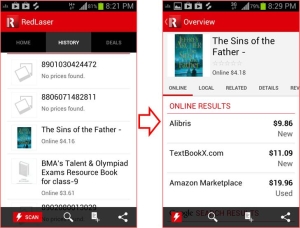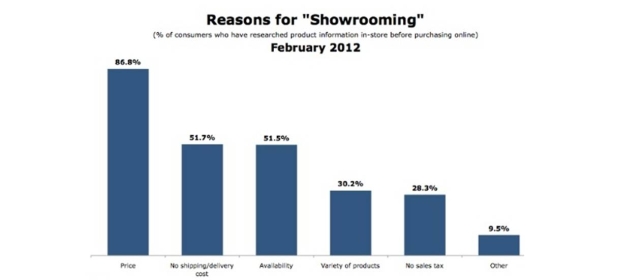In How Can Organized Retailers Respond To Showrooming?, I’d written about “showrooming”, the new shopping behavior in which consumers use a physical store as a showroom to touch and feel a product but ultimately buy it from an online competitor – often at a lower price.
 Although showrooming hasn’t yet become mainstream, it’s bound to gain traction with rapid smartphone adoption and availability of comparison shopping mobile apps like RedLaser. Since showrooming eats up their salesforce bandwidth and does not lead to sales, it’s not a friend of brick-and-mortar retail.
Although showrooming hasn’t yet become mainstream, it’s bound to gain traction with rapid smartphone adoption and availability of comparison shopping mobile apps like RedLaser. Since showrooming eats up their salesforce bandwidth and does not lead to sales, it’s not a friend of brick-and-mortar retail.
In my previous post, I’d outlined a few strategies that retailers could adopt in order to counter showrooming. While these strategies are not hard to implement, they might not be required.
I recently went through an experience that suggested that the solution to the showrooming problem could lie in something far more basic: Better inventory management.
A leading Indian retailer of gadgets, home appliances and white goods has a tagline to the effect that it helps you buy.
This is a strong differentiator in a competitive environment that is full of companies – both online and brick-and-mortar – indulging in hard hard selling and sharp business practices. However, it fizzles out if the company’s sole accomplishment in actual practice turns out to be “we help you buy … from our competitors”.
At least, that’s what happened with me on two different occasions.
I was in the market for a smartphone. I visited the said retailer’s competitors. Most of whom neither had working models nor knowledgeable salespersons who had any clue about what they were selling.
Frustrated with all of them, I went to the “we help you buy” retailer.
As expected, I was able to touch and feel actual products at its stores. Its salespersons were well informed and even helped me decide a suitable model. I was also willing to pay the small premium charged by this retailer in return for the superior shopping experience it delivered.
If you thought the story ended on that happy note, you’d be wrong. The retailer didn’t have stock of the said model recommended by its own salespersons.
Forced to give up on this company, I went ahead and bought the same model it had recommended from an online store.
Although I had no intention of engaging in showrooming, that’s what this retailer made me do, thanks to its poor inventory management.
Maybe the retailer has a problem with its inventory management software. Maybe it thinks that we’re still living in the old License Quota Raj era when Indians placed an order, paid a ‘token’ advance and waited for a week or two to receive the product. Whatever the reason, this retailer has been suffering from this problem for a long time – my two failed attempts to purchase from it were spaced two years apart.
